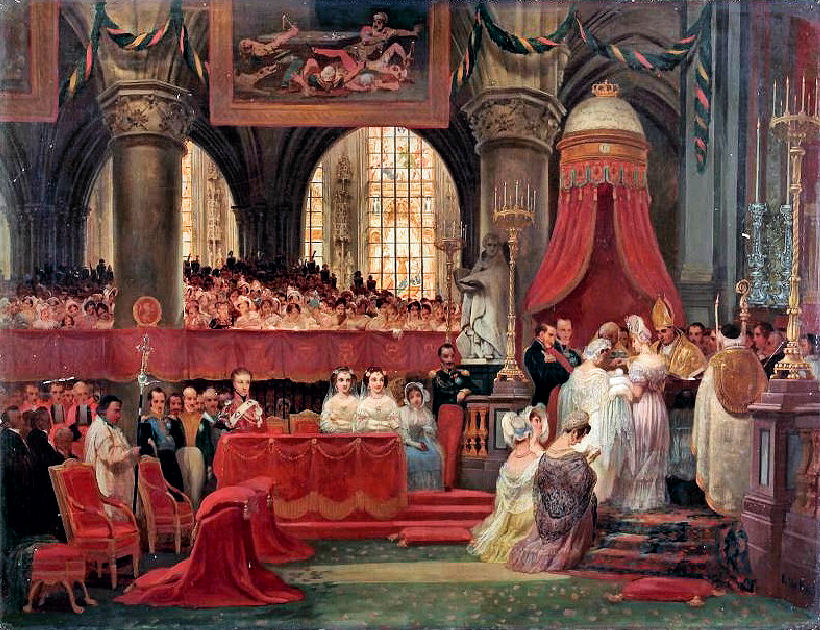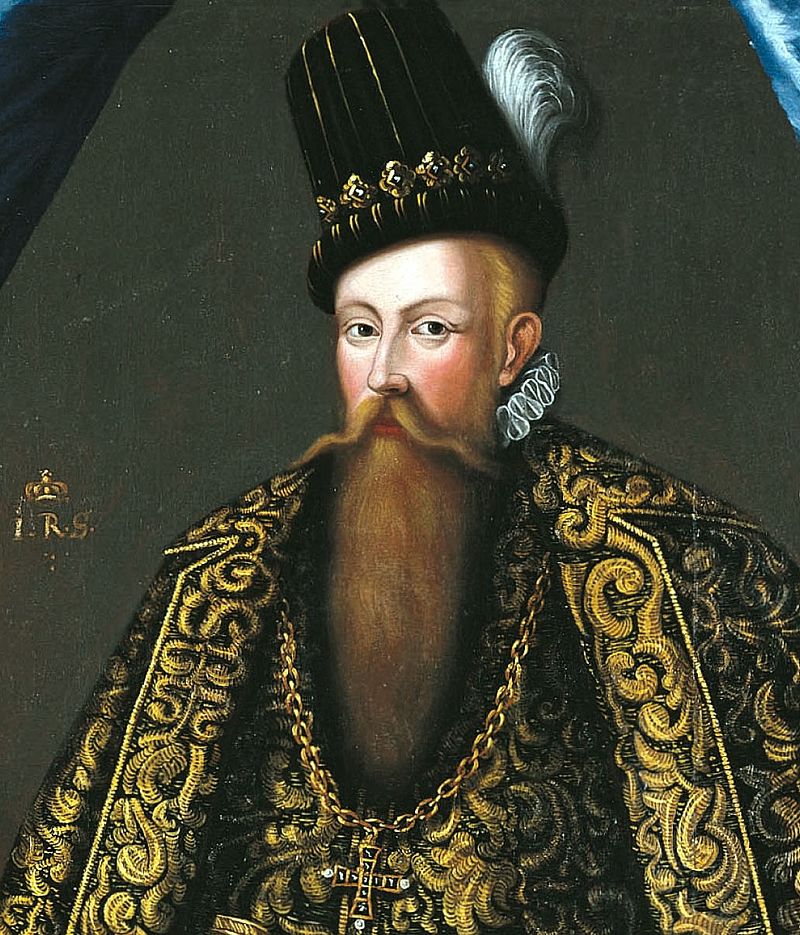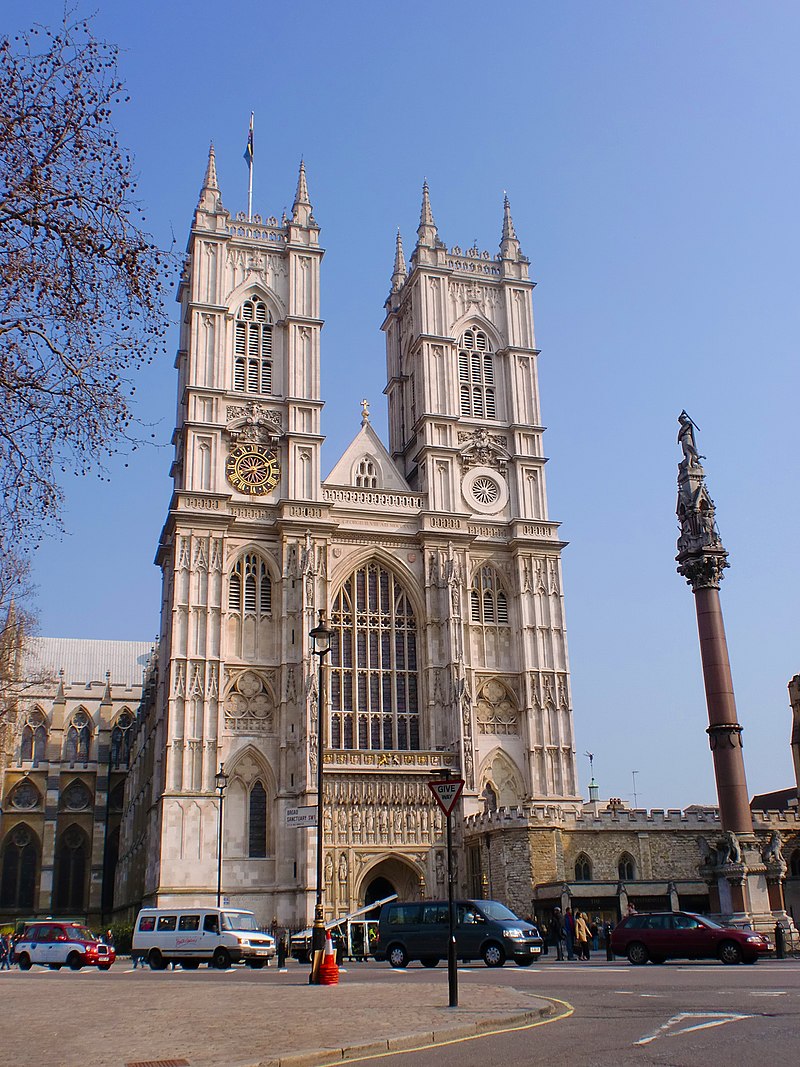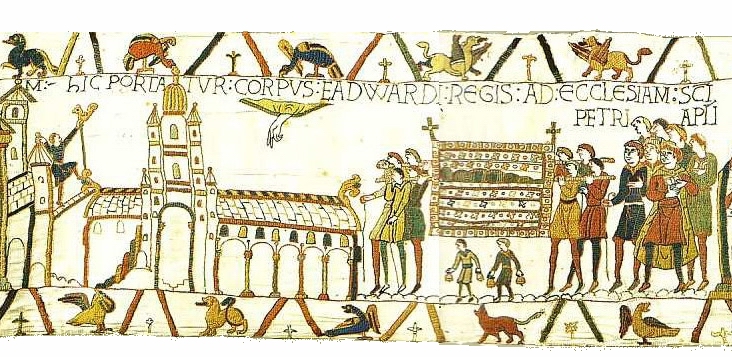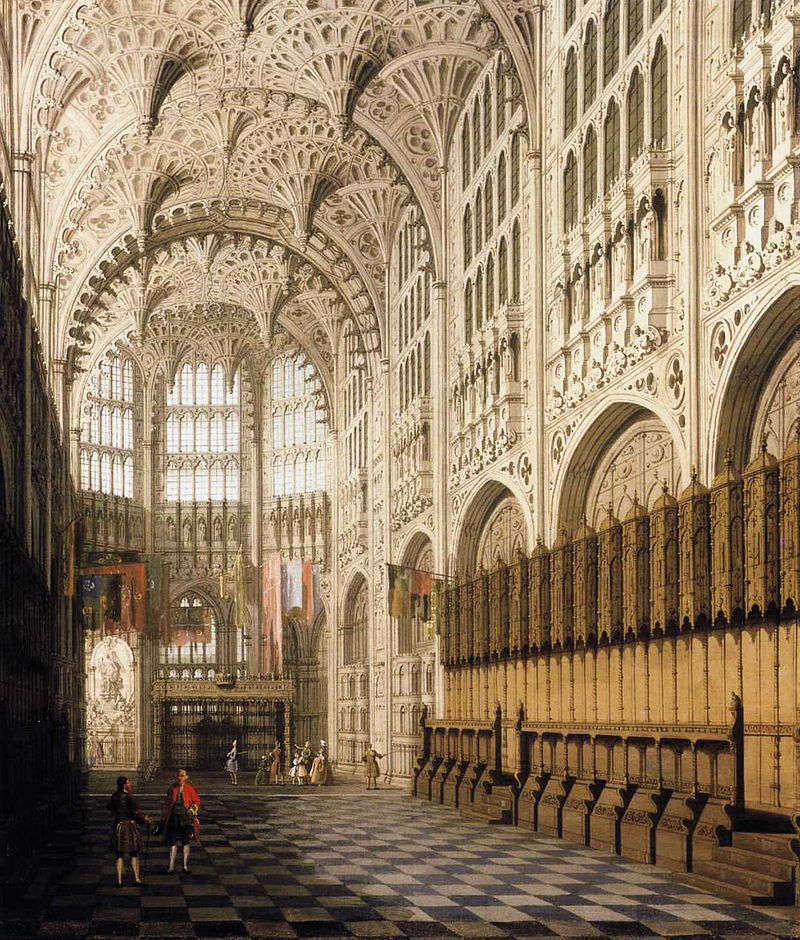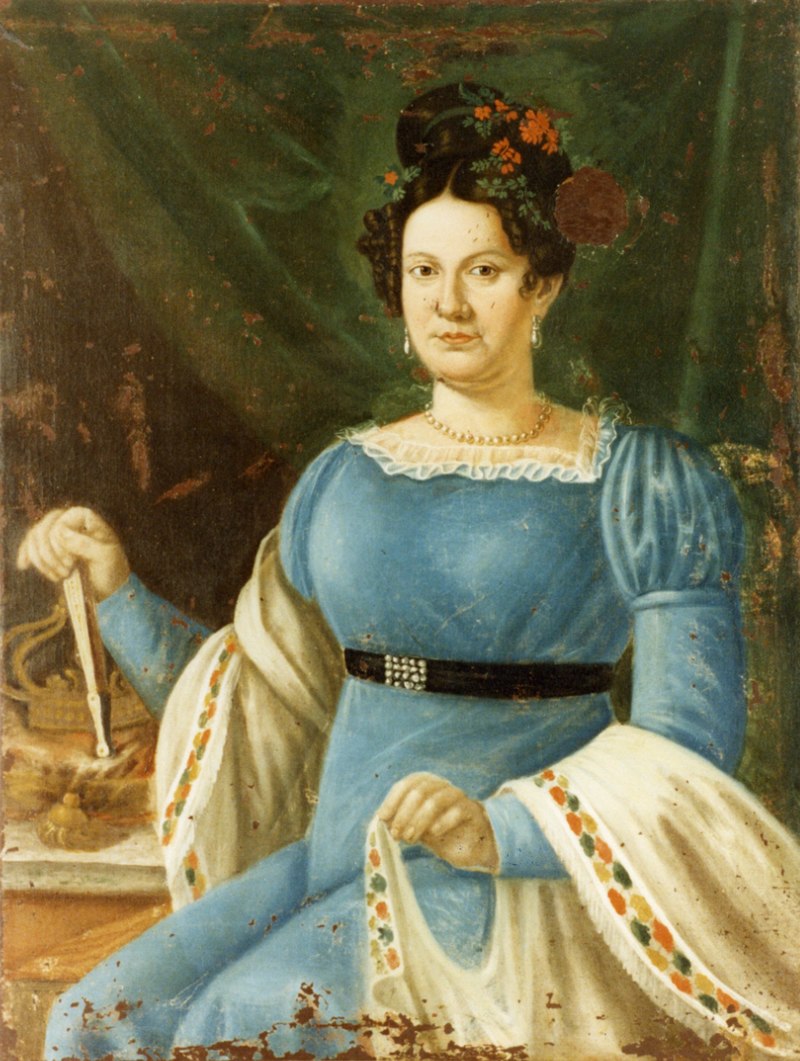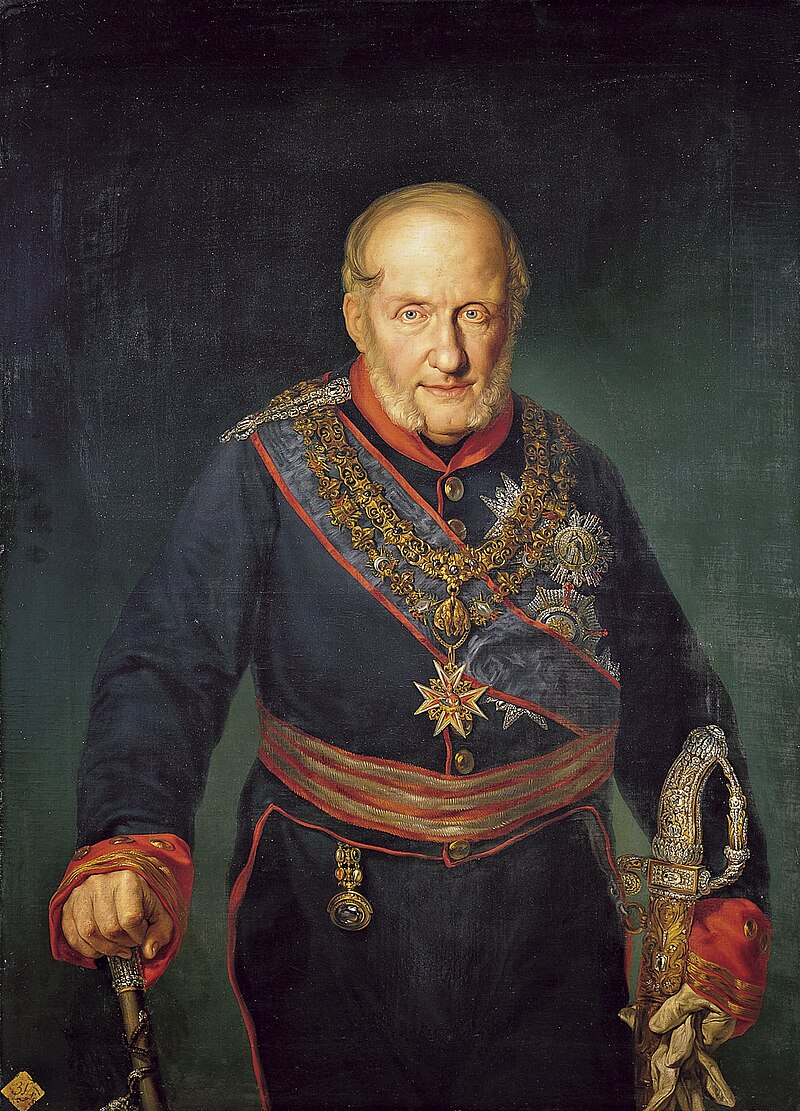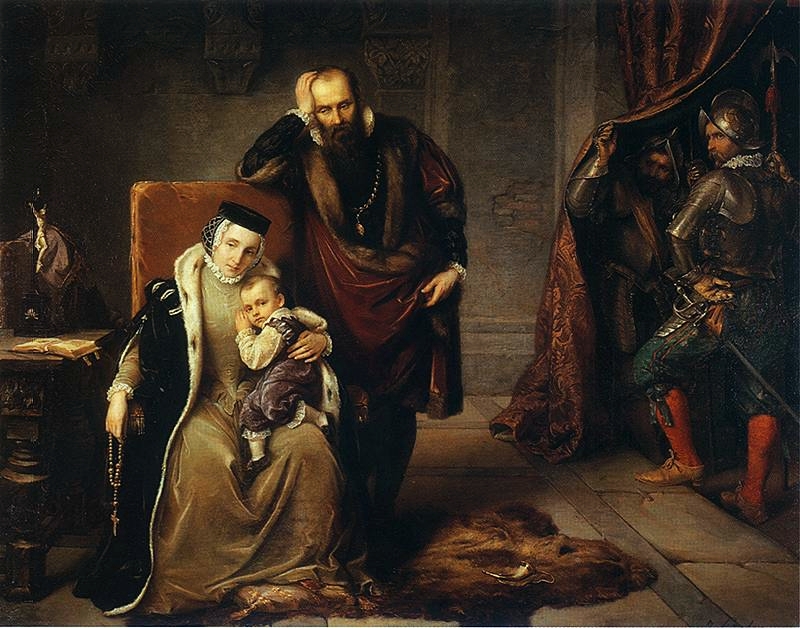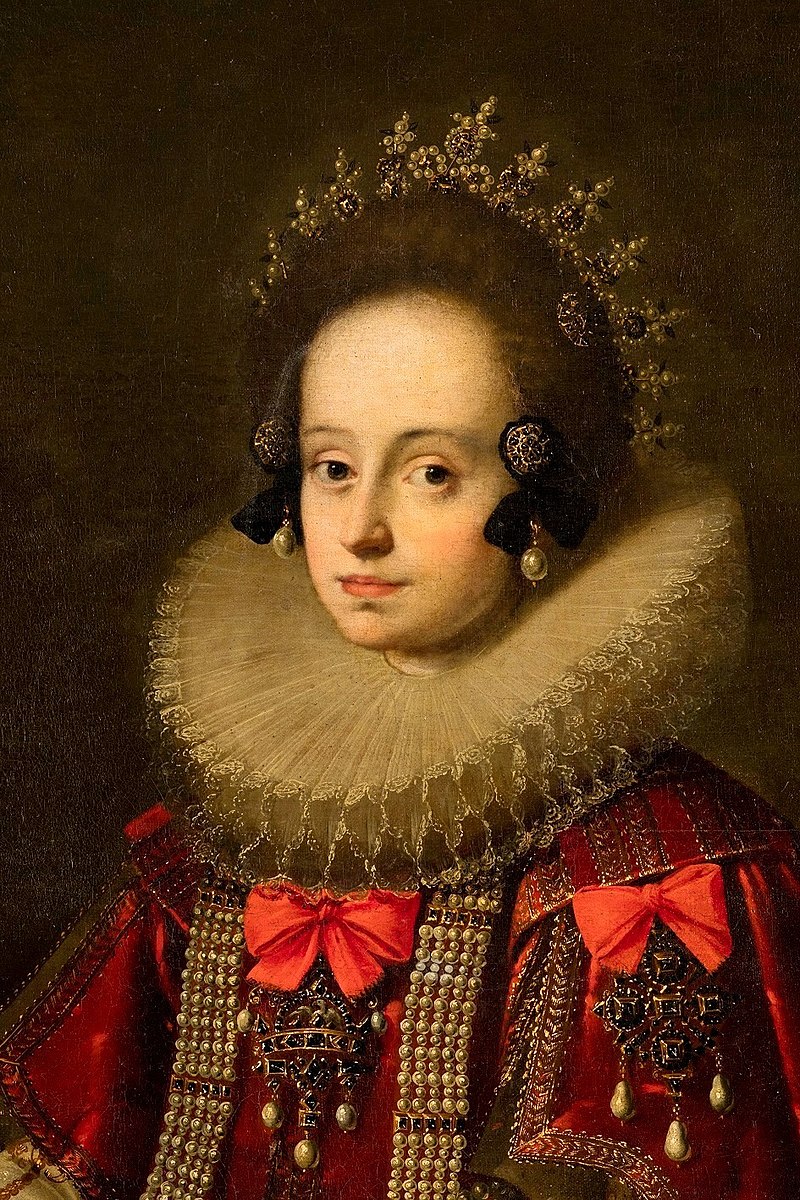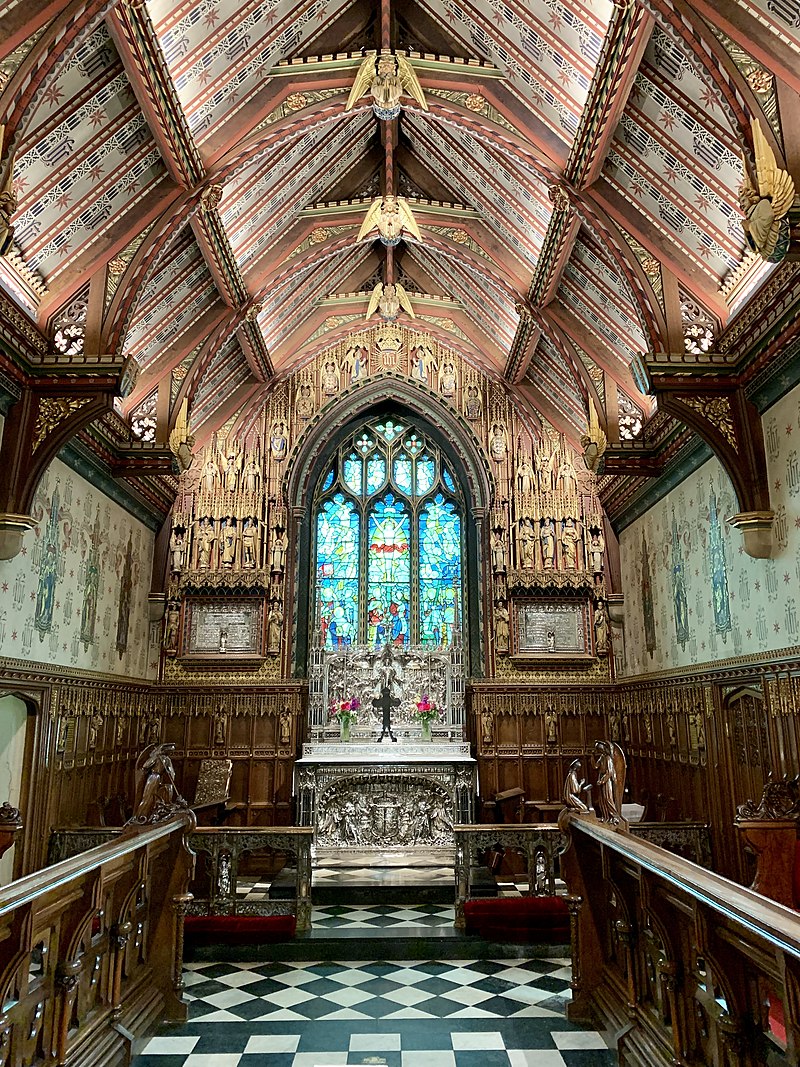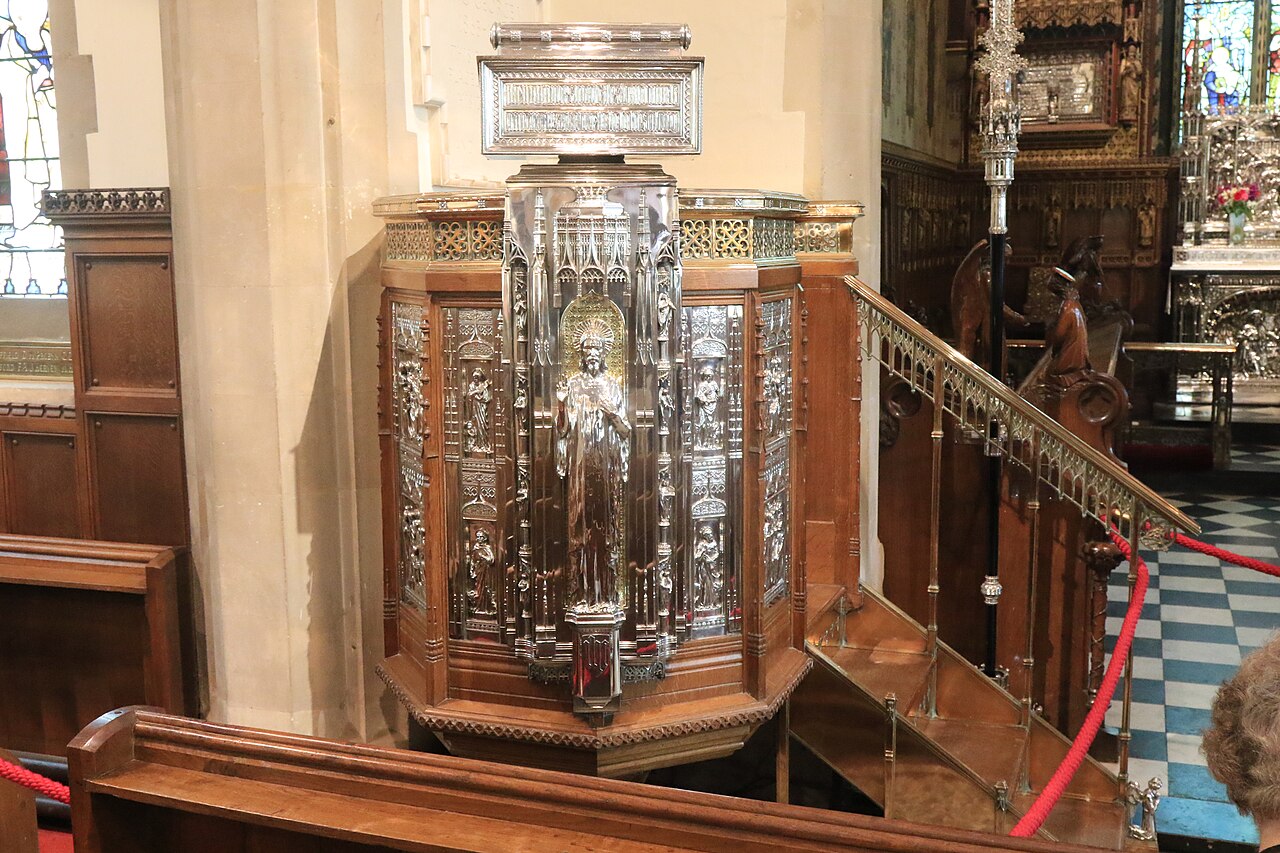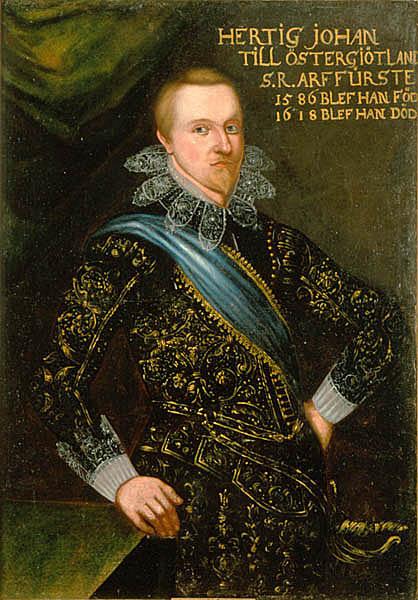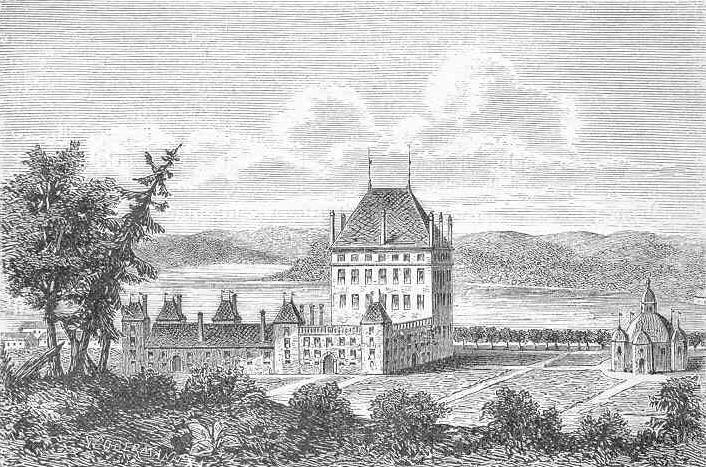by Susan Flantzer
© Unofficial Royalty 2021

Winchester Cathedral; Credit – By WyrdLight.com, CC BY-SA 3.0, https://commons.wikimedia.org/w/index.php?curid=23281174
The Kingdom of Wessex, from which the House of Wessex was derived, was an Anglo-Saxon kingdom in the south of Great Britain. Its seat of power was in Winchester and the Old Minster, the New Minster, and Winchester Cathedral, all in Winchester, now located in Hampshire, England, are mostly connected to the House of Wessex although there are several burials from the House of Denmark. The House of Wessex, sometimes known as the Anglo-Saxon kings, first reigned from 802 – 1013. From 1013 – 1014, the House of Denmark reigned. The House of Wessex was restored 1014 – 1016. One last time, the House of Denmark reigned from 1016 -1042. The final reign of the House of Wessex began in 1042 and ended with the conquest of William, Duke of Normandy in 1066.
*********************
The Old Minster

Bricks outline the site of the Old Minster next to Winchester Cathedral; Credit – Wikipedia
A minster was a cathedral or large church connected to a monastery. The Old Minster was the Anglo-Saxon cathedral for the diocese of Wessex and then Winchester from 660 to 1093. It stood on a site north of and partially beneath its successor, Winchester Cathedral. In 901, the New Minster, a royal Benedictine abbey, was built next to the Old Minster. After the consecration of Winchester Cathedral in 1093, the Old Minster was demolished. The remains of Kings of Wessex, Kings of England, and their consorts who had been buried in the Old Minster were exhumed and re-interred in Winchester Cathedral.
*********************
The New Minster

The New Minster (on left) and the Old Minster (on right); Credit – Wikipedia
Before his death, Alfred the Great, King of the Anglo-Saxons wanted to build a royal Benedictine abbey next to the Old Minster. His son and successor Edward the Elder, King of the Anglo-Saxons built the New Minster following Alfred the Great’s wishes. It stood so close to the Old Minster that the voices of the two abbey choirs merged with chaotic results. The remains of Alfred the Great and his wife Ealhswith were transferred to the New Minster. Edward the Elder was buried there as was one of his sons Ælfweard of Wessex. The building of Winchester Cathedral would use the area occupied by the New Minster. This required that the monks of New Minster move to Hyde Mead just outside the northern city walls, founding Hyde Abbey. The royal remains buried at the New Minster were transferred to Hyde Abbey but they were lost when Hyde Abbey was dissolved and demolished during the Dissolution of the Monasteries during the reign of King Henry VIII.
*********************
Winchester Cathedral

Winchester Cathedral; Credit – Wikipedia
Winchester Cathedral, originally a Roman Catholic cathedral, is now a cathedral of the Church of England in Winchester, Hampshire, England. It is one of the largest cathedrals in Europe and has the greatest overall length of any Gothic cathedral. The construction of Winchester Cathedral began in 1079 and the cathedral was consecrated in 1093. Over the centuries, there were renovations and additions but a substantial amount of the original building still remains including the crypt, the transepts, and the basic structure of the nave.

The nave looking east towards the choir; Credit – By Diliff – Own work, CC BY-SA 3.0, https://commons.wikimedia.org/w/index.php?curid=33930954
*********************
Royal Burials

One of the mortuary chests at Winchester Cathedral; Credit – By Ealdgyth – Own work, CC BY-SA 3.0, https://commons.wikimedia.org/w/index.php?curid=11358612
After the consecration of Winchester Cathedral in 1093, the Old Minster was demolished. The remains of Kings of Wessex, Kings of England, and their consorts who had been buried in the Old Minster were exhumed and re-interred in Winchester Cathedral. They were kept in six mortuary chests – painted wooden caskets – which were displayed atop the stone choir screen walls on either side of the high altar for hundreds of years. In 1642, during the English Civil War, Winchester Cathedral was ransacked and the royal remains from the mortuary chests were scattered by Roundhead soldiers. The remains were returned to the mortuary chests by local people in a haphazard manner.

The six mortuary chests waiting for examination; Credit – Winchester Cathedral
In 2012, an examination of the remains in the chests began and the project is still ongoing. The examination included DNA testing, reassembly of the skeletons, and analysis to determine the sex, age, and other characteristics of the remains. The six mortuary chests were found to hold the remains of at least 23 individuals, more than the 12 – 15 remains originally thought. One of the remains discovered is believed to be Emma of Normandy, the wife of two kings – Æthelred II, King of the English and Cnut the Great, King of England, Denmark and Norway – and the mother of two kings – Harthacnut, King of England, King of Denmark and Saint Edward the Confessor, King of England.

Remains of Emma of Normandy; Credit – Winchester Cathedral
Below are known royals who were interred at the Old Minster, New Minster, and/or Winchester Cathedral. It is certainly not a complete list.
642 – Cynegils, King of Wessex – remains are probably in a mortuary chest at Winchester Cathedral
672 – Cenwalh, King of Wessex – remains are probably in a mortuary chest at Winchester Cathedral
786 – Cynewulf, King of Wessex – remains are probably in a mortuary chest at Winchester Cathedral
839 – Egbert, King of Wessex – remains are probably in a mortuary chest at Winchester Cathedral
858 – Æthelwulf, King of Wessex – first buried at Steyning, England, then in Old Minster, remains are probably in a mortuary chest at Winchester Cathedral
899 – Alfred the Great, King of Wessex, King of the Anglo-Saxons – originally buried in the Old Minster, the remains of Alfred and his wife Ealhswith were moved to the New Minster four years later. Because of the building of the new Winchester Cathedral, the monks of New Minster were moved to a new abbey, Hyde Abbey, just outside the walls of Winchester. When the new church of Hyde Abbey was consecrated in 1110, the remains of Alfred, his wife Ealhswith, and his son Edward the Elder were interred before the Hyde Abbey high altar. In 1539, during the reign of King Henry VIII, Hyde Abbey was dissolved and demolished during the Dissolution of the Monasteries and the tombs were lost.
902 – Ealhswith, wife of Alfred the Great – originally buried in the Old Minster, see Alfred the Great above
924 – Edward the Elder, King of the Anglo-Saxons – son of Alfred the Great, originally buried in the New Minster, see Alfred the Great above
955 – Eadred, King of the English – buried in the Old Minster, remains are probably in a mortuary chest at Winchester Cathedral
959 – Eadwig, King of the English – originally buried in the New Minster but nothing is known about the later fate of his remains
? – Ælfgifu, wife of Eadwig – originally buried in the New Minster but nothing is known about the later fate of her remains
1035 – Cnut the Great, King of England, Denmark, and Norway – originally buried in the Old Minster, remains are probably in a mortuary chest at Winchester Cathedral
1042 – Harthacnut, King of England, King of Denmark – originally buried in the Old Minster, his remains were moved to Winchester Cathedral and were placed in a mortuary chest when the Old Minster was demolished in 1093, at a later date his remains were interred in a tomb at Winchester Cathedral, Harthacnut’s tomb was remodeled and a plaque was placed on the tomb in 1525

Harthacnut’s tomb in Winchester Cathedral; Credit – http://www.dandebat.dk/
1052 – Emma of Normandy, wife of wife of Æthelred II, King of the English and Cnut the Great, King of England, Denmark and Norway – originally buried in the Old Minster, remains are probably in a mortuary chest at Winchester Cathedral
1053 – Godwin, Earl of Wessex – remains are probably in a mortuary chest at Winchester Cathedral
circa 1069 -1075 – Richard of Normandy – second son of William I (the Conqueror), King of England, killed in a hunting accident in the New Forest, buried at Winchester Cathedral
1087 – William II Rufus, King of England – killed in a hunting accident in the New Forest, originally buried at Winchester Cathedral. In 1107, the tower at Winchester Cathedral near William Rufus’ grave collapsed and the presence of William Rufus’ remains was considered to be the cause. Around 1525, the royal remains in Winchester Cathedral were rearranged. William Rufus’ remains were transferred to one of the mortuary chests
1171 – Henry of Blois, also known as Henry of Winchester, Bishop of Winchester – son of Stephen II, Count of Blois and Adela of Normandy, grandson of William I (the Conqueror), King of England, younger brother of King Stephen of England
1375 – Cardinal Henry Beaufort, Bishop of Winchester – legitimized son of John of Gaunt and his mistress and third wife Katherine Swynford, grandson of King Edward III of England, Lord Chancellor of England under Henry V and Henry VI

Tomb of Cardinal Henry Beaufort, Bishop of Winchester; Credit – By Scrivener-uki – Own work, CC BY-SA 3.0, https://commons.wikimedia.org/w/index.php?curid=8755532
*********************
Coronations, Marriages, and Funerals
1042 – Funeral of King Harthacanut at the Old Minster
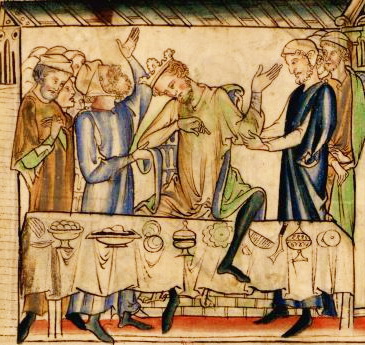
Death of King Harthacnut at a wedding feast; Credit – Wikipedia
On June 8, 1042, Harthacnut, son of Cnut the Great, King of England, Denmark, and Norway, attended a wedding in Lambeth, London, England. As he was drinking to celebrate the wedding, according to the Anglo-Saxon Chronicle, “He died while standing with his drink. Suddenly he fell to the ground with violent convulsions.” Harthacnut was only 23-24 years old. There were unproven suspicions that he was poisoned and certainly there were people who would have benefitted from his death. His death also could have been caused by a stroke due to excessive drinking. A 2015 study speculated that perhaps up to fourteen Danish kings, including Harthacnut, who suddenly died at a relatively young age without being ill, possibly died of Brugada Syndrome, a genetic disorder in which the electrical activity in the heart is abnormal. It increases the risk of abnormal heart rhythms and sudden cardiac death.
Harthacnut was initially buried at the Old Minster. When the Old Minster was demolished in 1093, Harthacnut’s remains were moved to Winchester Cathedral and were placed in a mortuary chest near the shrine of St. Swithun. However, his remains were ultimately interred in a tomb below the eastern arch of the cathedral in the north aisle. In 1525, Harthacnut’s tomb was remodeled and a plaque was placed on the tomb.
1100 – Funeral of King William II Rufus of England at Winchester Cathedral
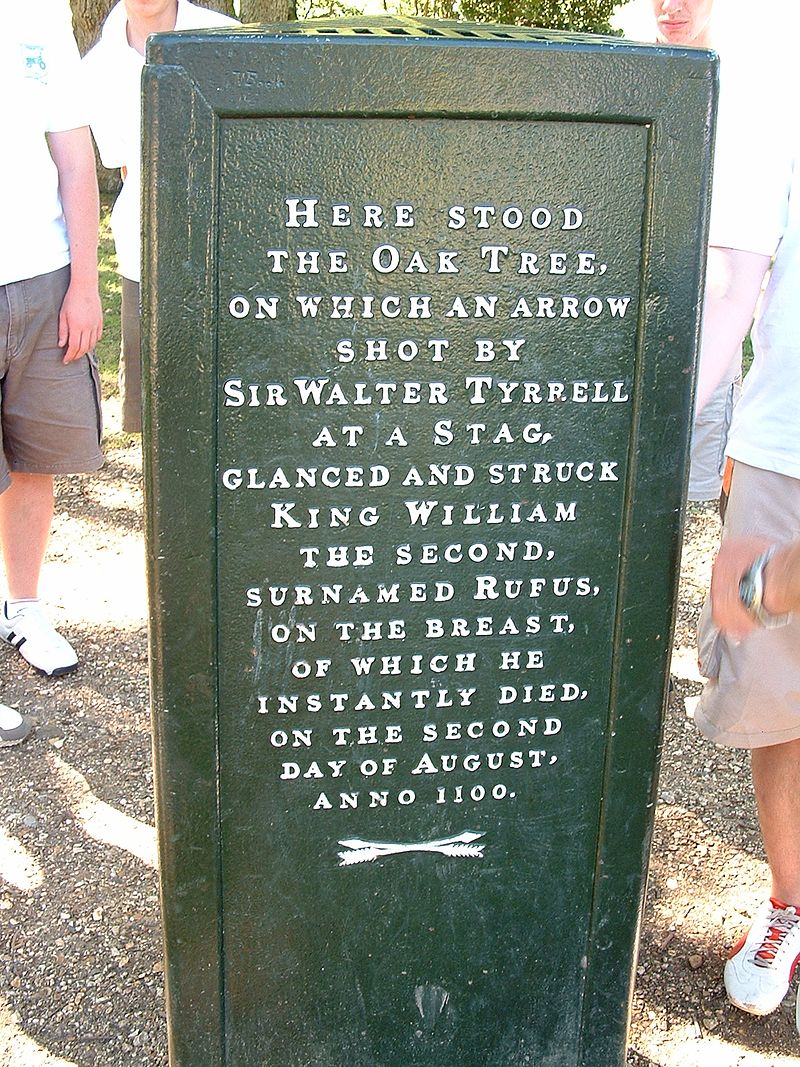
Rufus Stone on the site of the death of William II Rufus; Photo Credit – By Adem Djemil, CC BY 2.5, https://commons.wikimedia.org/w/index.php?curid=56115617
On August 2, 1100, King William II Rufus rode out from Winchester Castle on a hunting expedition to the New Forest, accompanied by his brother, the future King Henry I, and several nobles. According to most contemporary accounts, William Rufus was chasing after a stag followed by Walter Tirel, a noble. William Rufus shot an arrow but missed the stag. He then called out to Walter to shoot, which he did, but the arrow hit the king in his chest, puncturing his lungs, and killing him. Walter Tirel jumped on his horse and fled to France.
The next day, William Rufus’ body was found by a group of local farmers. The nobles had fled to their Norman and English lands to secure their possessions and ensure law and order following the death of the king. The farmers loaded the king’s body on a cart and brought it to Winchester Cathedral where he was buried under a plain flat marble stone below the tower with little ceremony.
In 1107, the tower at Winchester Cathedral near William Rufus’ grave collapsed and the presence of William Rufus’ remains was considered to be the cause. Around 1525, the royal remains in Winchester Cathedral were rearranged. William Rufus’ remains were transferred to one of the mortuary chests next to the mortuary chest of King Cnut the Great atop the stone wall around the high altar.
August 27, 1172 – Coronation of Henry the Young King and his wife Marguerite of France

Henry the Young King; Credit – Wikipedia
When Henry was 15, his father King Henry II decided to adopt the French practice of ensuring the succession by declaring his heir the junior king. Henry was crowned at Westminster Abbey on June 14, 1170. His wife Marguerite was not crowned at this time and this greatly infuriated her father King Louis VII of France. To appease Louis VII, another coronation which included Marguerite was held on at Winchester Cathedral. However, Henry the Young King predeceased his father and never became King of England. Instead, his brother succeeded their father as Richard I, King of England.
April 17, 1194 – Crown-wearing of King Richard I of England at Winchester Cathedral
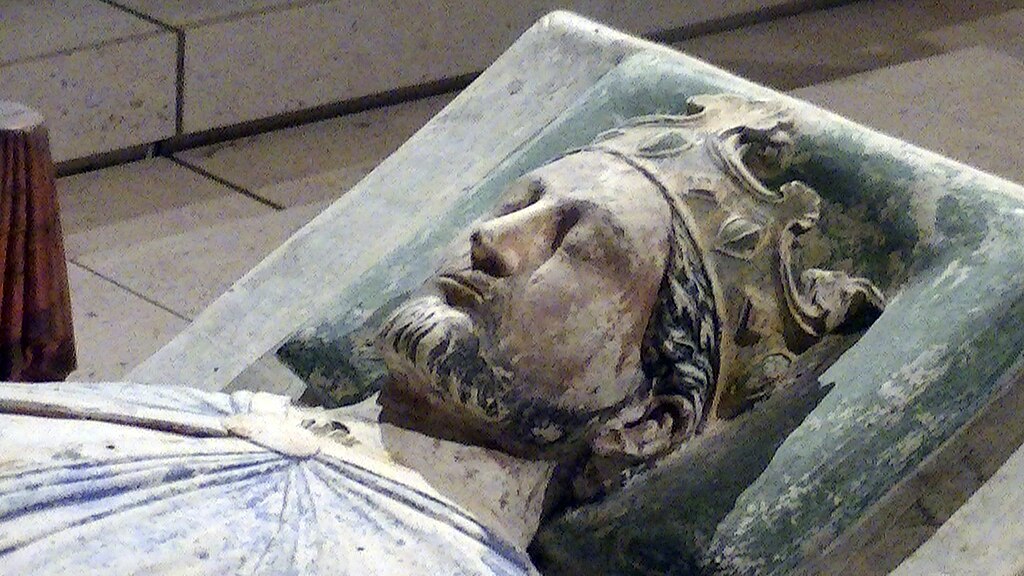
Effigy of King Richard I; By Adam Bishop – Own work, CC BY-SA 3.0, https://commons.wikimedia.org/w/index.php?curid=17048652
On his way home from the Third Crusades, Richard was shipwrecked, forcing him to take a dangerous land route through central Europe. He was arrested near Vienna in December 1192 by Leopold V, Duke of Austria, who suspected Richard of murdering his cousin during the Crusades and had also been offended by Richard throwing down his standard from the walls of Acre in the Holy Land. In March 1193, Richard was transferred to the custody of Henry VI, Holy Roman Emperor, who demanded that a ransom of 150,000 marks (100,000 pounds of silver) be delivered to him before Richard would be released. This was an enormous amount, equal to two to three times the annual income for the English Crown at that time. Eleanor of Aquitaine, Richard’s mother, worked to raise the ransom.
Finally, with the ransom in the emperor’s possession, Richard was released on February 4, 1194, and returned to England, where he had not been since 1190. The crown-wearing was a public occasion almost as solemn as a coronation. It had been a regular practice several times a year for the Norman kings of England but Richard’s father King Henry II had stopped the practice. Richard was persuaded by his advisers to participate in the crown-wearing because it was a way to reassert his royal authority.
Wearing a crown on his head and the ceremonial robes that he had worn at his coronation in 1189 at Westminster Abbey, Richard walked from the priory of Winchester Cathedral to the cathedral. Three earls walked before him carrying ceremonial swords while the earls and knights of England surrounded him. Outside the cathedral, crowds of people gathered. Inside the cathedral, Richard’s 72-year-old mother Eleanor of Aquitaine and the nobility of England waited to witness Richard in his regal splendor.
February 7, 1403 – Wedding of King Henry IV of England and his second wife Joan of Navarre at Winchester Cathedral

Tomb of Henry IV and his second wife Joan of Navarre in Canterbury Cathedral; Credit: Susan Flantzer
In 1398, the future Henry IV quarreled with Thomas de Mowbray, 1st Duke of Norfolk, who accused him of treason. The two men planned to duel, but instead, King Richard II banished them from England. Henry went to France, and on a visit to the court of Brittany, he met his future second wife Joan of Navarre, the widow of Jean V, Duke of Brittany. Henry made a good impression upon Joan. Henry’s first wife had died in 1394. but Joan was not in a position to remarry. In 1402, after Joan’s son came of age and could rule Brittany on his own, she sent an emissary to England to arrange a marriage with Henry, now King of England. Henry was agreeable to the marriage and a proxy marriage was held on April 3, 1402, with Joan’s emissary standing in for the bride. Joan left France for England in January 1403 with her two youngest daughters and then traveled to Winchester where Henry met her and they were married at Winchester Cathedral.
July 25, 1554 – Wedding of Queen Mary I of England and King Philip II of Spain at Winchester Cathedral

Philip and Mary; Credit – Wikipedia
Mary and Philip, first cousins once removed, made a political marriage. Roman Catholic Mary was 37, and she needed to marry and produce a Catholic heir to supplant her Protestant sister Elizabeth. Edward Courtney, 1st Earl of Devon, a Plantagenet descendant, was suggested. However, Mary had her heart set on marrying Philip, the only son of Mary’s first cousin Charles V, Holy Roman Emperor. Philip was a widower and was eleven years younger than Mary. Parliament begged her to reconsider fearing the threat of a marriage to a foreign royal might have for English independence. When Mary insisted on marrying Philip, a rebellion broke out, led by Thomas Wyatt, to depose Mary in favor of her half-sister Elizabeth. Wyatt marched on London but was defeated and executed.
Since Philip spoke no English, the wedding ceremony at Winchester Cathedral was said in a combination of French, Spanish, and Latin. The marriage was unsuccessful. Although Mary loved Philip, he found her repugnant. Mary thought she was pregnant but there was no baby. After being in England for fourteen months, Philip returned to Spain in August 1555. Mary was heartbroken and went into a deep depression. Philip did return to England in 1557 and was happily received by Mary. Philip wanted England to join Spain in a war against France. Mary agreed and the result was the loss of Calais, England’s last remaining possession in continental Europe. Philip left England in July 1557, never to return. Mary said of these losses, “When I am dead, you will find the words ‘Philip’ and ‘Calais’ engraved upon my heart.” Mary died in 1558 and Philip married two more times and reigned as King of Spain until his death in 1598.
*********************
This article is the intellectual property of Unofficial Royalty and is NOT TO BE COPIED, EDITED, OR POSTED IN ANY FORM ON ANOTHER WEBSITE under any circumstances. It is permissible to use a link that directs to Unofficial Royalty.
Works Cited
- BBC News. 2015. Winchester Cathedral’s ‘royal bones’ chests analysed. [online] Available at: <https://www.bbc.com/news/uk-england-hampshire-31115104> [Accessed 12 July 2021].
- BBC News. 2019. ‘Queen’s bones’ found in Winchester Cathedral royal chests. [online] Available at: <https://www.bbc.com/news/uk-england-hampshire-48281733> [Accessed 12 July 2021].
- BBC News. 2019. The riddle of Winchester Cathedral’s skeletons. [online] Available at: <https://www.bbc.com/news/uk-england-hampshire-48300450> [Accessed 12 July 2021].
- Current Archaeology. 2019. Unlocking the secrets of the Winchester Cathedral mortuary chests – Current Archaeology. [online] Available at: <https://archaeology.co.uk/articles/news/unlocking-the-secrets-of-the-winchester-cathedral-mortuary-chests.htm> [Accessed 12 July 2021].
- Dodson, Aidan, 2004. The royal tombs of Great Britain. London: Duckworth.
- En.wikipedia.org. 2021. Winchester Cathedral – Wikipedia. [online] Available at: <https://en.wikipedia.org/wiki/Winchester_Cathedral> [Accessed 12 July 2021].
- Flantzer, Susan, 2021. British Royal Burial Sites: House of Denmark Index (1013-1014 and 1016-1042). [online] Unofficial Royalty. Available at: <https://www.unofficialroyalty.com/royal-burial-sites/british-royal-burial-sites-house-of-denmark-index-1013-1014-and-1016-1042/> [Accessed 12 July 2021].
- Flantzer, Susan, 2021. British Royal Burial Sites: House of Wessex (871-1013), (1014-1016), and (1042-1066). [online] Unofficial Royalty. Available at: <https://www.unofficialroyalty.com/royal-burial-sites/british-royal-burial-sites-house-of-wessex-871-1013-1014-1016-and-1042-1066/> [Accessed 12 July 2021].
- Jones, Dan, 2012. The Plantagenets. New York: Viking.
- Williamson, David, 1996. Brewer’s British royalty. London: Cassell.










